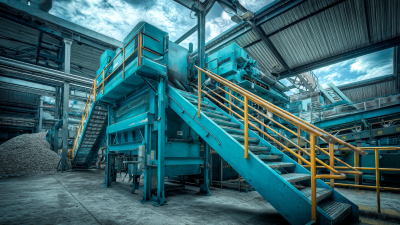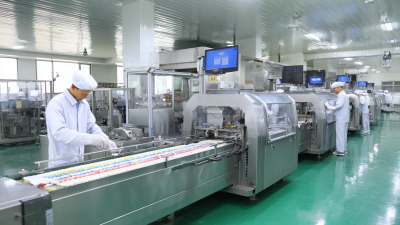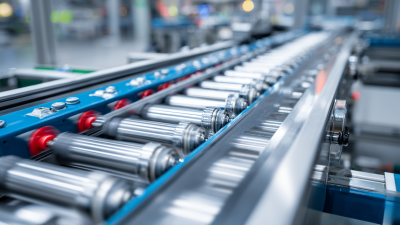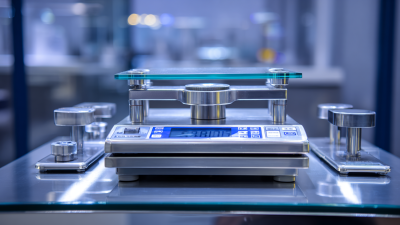In today's fast-paced manufacturing environment, efficiency is paramount for maintaining competitive advantage. As companies strive to optimize their production processes, the implementation of advanced technologies becomes essential. One crucial component of this optimization is the Sorting Machine, which plays a pivotal role in enhancing workflow and reducing operational bottlenecks. By automating the sorting of materials and products, businesses can significantly improve accuracy, speed, and resource allocation. This article delves into various efficient Sorting Machine solutions designed to streamline production processes, highlighting their key benefits and potential applications across different industries. From minimizing manual labor to enhancing consistency in output quality, investing in a modern Sorting Machine can transform the way organizations operate, ultimately leading to increased productivity and profitability.
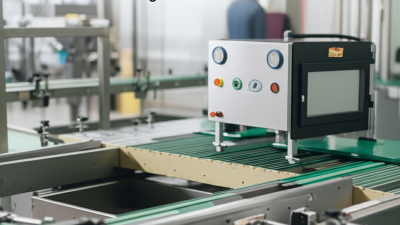
In today’s fast-paced manufacturing environment, efficient sorting machines play a pivotal role in enhancing production processes. According to a report by MarketsandMarkets, the global market for sorting machines is projected to reach USD 6.5 billion by 2025, reflecting a CAGR of 7.7% from 2020. This growth underscores the increasing reliance on automation and efficiency in production lines, where sorting machines are critical for ensuring accuracy and speed in separating materials.
The importance of these machines extends beyond mere efficiency; they significantly impact overall operational costs and product quality. A study published in the Journal of Manufacturing Science and Engineering indicates that implementing advanced sorting technologies can reduce wastage by up to 30%, thereby increasing profit margins. Furthermore, automated sorting systems minimize human error and enhance consistency in product quality, which are vital in industries such as food processing and pharmaceuticals, where regulatory standards are stringent. As manufacturers seek to optimize their production workflows, investing in efficient sorting machines becomes essential for maintaining competitiveness and meeting market demands.
When evaluating different types of sorting machines for your operations, it's essential to consider the interplay of various efficiency factors. Just as the core of app promotion revolves around maximizing operational efficiency, similar principles apply to sorting machinery. The right sorting solutions can significantly enhance productivity and streamline workflows, allowing companies to better manage the complexities of their production processes.
Modern sorting machines leverage advanced technologies, including real-time execution and machine learning, to optimize operations. This allows businesses to not only sort products effectively but also to adapt their sorting strategies dynamically in response to changing production demands. By adopting a systematic approach to evaluating sorting machines, companies can identify the best fit for their specific needs, ensuring that their operational efficiency aligns with broader business objectives.
The utilization of performance metrics, such as those derived from historical data and real-time analytics, can further refine the selection process, leading to improved outcomes and a more streamlined production line.
When considering sorting machine technology, it's imperative to focus on key features that can significantly enhance production efficiency. One critical aspect is the machine's sorting speed, which is increasingly important in today's fast-paced manufacturing environments. According to a report by MarketsandMarkets, the global market for automated sorting systems is projected to reach $28.89 billion by 2025, showcasing the growing reliance on high-speed sorting solutions. Companies can enhance their throughput rates and improve overall productivity by investing in machines that offer rapid sorting capabilities.
Another essential feature is the accuracy of the sorting process. Machines equipped with advanced imaging and sensor technologies ensure precise detection and separation of items, reducing errors that can lead to costly waste. A study conducted by Grand View Research indicates that accuracy enhancements in sorting systems can lead to a reduction in operational costs by up to 20%. Furthermore, the integration of artificial intelligence and machine learning algorithms allows sorting machines to adapt to varying production needs, further optimizing performance. By selecting sorting machines with these vital characteristics, manufacturers can effectively streamline their production processes and maximize their return on investment.
| Feature | Description | Benefits | Technology Type |
|---|---|---|---|
| High Speed Processing | Capable of sorting large volumes of items quickly and efficiently. | Increased production throughput; reduced sorting time. | Automation |
| Multi-dimensional Sorting | Sorts items based on various dimensions such as size, weight, and shape. | Improved accuracy in sorting; versatility for different product types. | AI Integration |
| Real-time Monitoring | Allows operators to view sorting processes and outputs in real-time. | Enhanced operational control and quick response to errors. | IoT Technology |
| Modular Design | Flexible machine design that allows for easy upgrades and changes. | Reduced downtime; adaptable to changing production needs. | Flexible Automation |
| Energy Efficiency | Utilizes technologies that minimize energy consumption during operation. | Lower operational costs; environmentally friendly. | Smart Technology |
| User-friendly Interface | Intuitive controls and software for ease of use by operators. | Reduced training time; decreased error rates. | Digital Display |
Implementing automation in sorting processes can significantly enhance efficiency and accuracy within your production workflow. As industries strive for higher productivity, integrating advanced sorting machines equipped with smart technology allows for quicker sorting tasks that previously demanded extensive manual labor. For instance, automated systems can utilize optical recognition technology to identify and categorize items swiftly, ensuring that products move seamlessly through the production line without the bottlenecks common with manual sorting methods.
Moreover, these automated solutions are designed to adapt to various production needs, which means they can efficiently handle fluctuating volumes and different types of products without requiring extensive reconfiguration. This adaptability not only optimizes operational workflow but also reduces the potential for human error, leading to a higher quality output. By investing in such sorting machines, companies can maintain a competitive edge, reduce operational costs, and ultimately deliver products to market faster. The smart integration of automation is paving the way for future-ready production environments.
Maintaining sorting machines is crucial for ensuring optimal efficiency in production processes. According to a report by the International Society of Automation, poorly maintained equipment can lead to a 20% reduction in productivity. To keep sorting machines running smoothly, regular inspections and preventive maintenance should be prioritized. Lubricating moving parts, checking for wear and tear, and ensuring all sensors are calibrated can significantly enhance machine performance and longevity.
Furthermore, mitigating downtime is essential for maintaining consistent production flow. A study published in the Journal of Manufacturing Science and Engineering highlights that companies implementing a routine maintenance schedule experienced a 30% decrease in unplanned outages. Training operators to recognize early signs of mechanical issues can also prevent costly repairs. Emphasizing a proactive maintenance approach enables businesses to streamline operations and avoid disruptions, ensuring that sorting machines contribute effectively to the overall efficiency of the production process.
